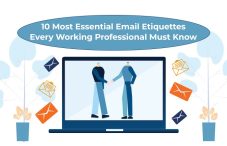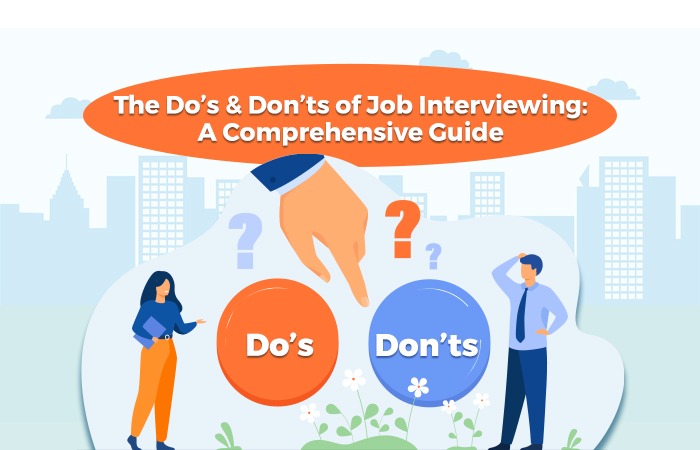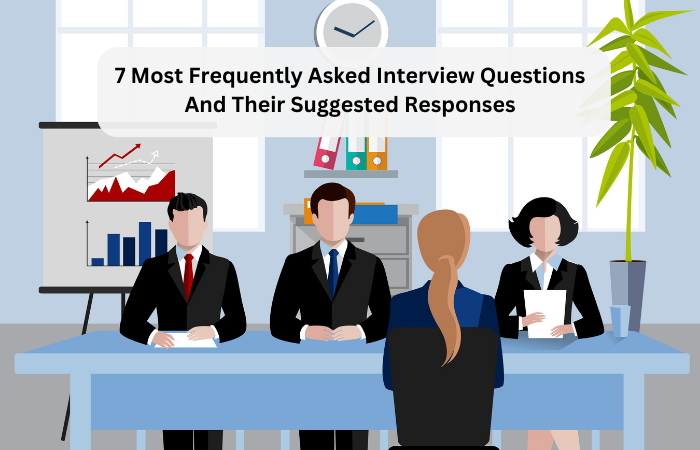Studies show that on an average, we spend 1/3rd of our office hours reading and replying to emails.
Emails are an essential part of our work lives. However, writing emails or replying to emails can be a daunting task for most.
How should I address the recipient? Should I end with ‘thank you’ or ‘regards’?
Even after several years of writing emails, one may not be sure about the answers to many such questions.
A well written email can help avoid confusion and conflicts and build better work relationships, especially now when team members are working remotely.
Here are 10 most essential email etiquettes that you as a working professional must know about.
1 – Clear Subject Line
With the barrage of emails that office goers receive every day, subject line becomes an important tool for the reader to decide whether the email is important and urgent, or it can wait, or it can be deleted without opening.
Keep your subject line clear and precise. Use short phrases or simple sentences, which clearly state the purpose of the email. Value the reader’s time by providing the utility or the business behind the email in the subject line.
Avoid using ‘urgent’ or ‘important’ for every email and use it sparingly for only genuinely urgent matters.
2 – Greetings are Important
Salutations can be confusing. Follow these simple rules when you are not sure.
- If you are writing to someone you do not know very well, use a formal salutation like Mr/Ms.
- If you are writing to a team member or a close colleague, a simple ‘hi’ will do.
- If you are replying to a chain of emails, not using any greeting after the first reply is fine.
Salutations also depend on your company culture. Find out what is an acceptable norm before you write.
3 – Pay Attention to the Look of the Email
Choose appropriate fonts and structure for your emails, especially if it is a long email. Use fonts that are usually used for formal emails like Arial, Times New Roman.
Highlights can be done by using a single color or just using bold/italics. Using too many different colors and fonts in the email make it look frivolous and informal.
Structure your matter into paragraphs for the ease of reading if it is a long email.
Your professional signature with your name, job title and contact details can be added in the end of the email as a default setting.
4 – Tone of Your Email
Remember, it is an office email and hence the tone of the mail should be formal.
Since the person receiving the mail is not able to see your face or hear the tone of your voice, it is important to convey your message positively.
Be mindful of the choice of words used in the email. Avoid using negative words or personal jokes, sarcastic remarks, etc in your email.
5 – Clear and Precise Message
On an average, an office goer receives over 100 emails in a day. Spare a thought for the readers and convey your message in clear and concise manner. The recipient of the email may or may not have the time or patience to go through irrelevant matter or unnecessary attachments.
Stick to the matter at hand and do not mix multiple unrelated issues in one mail. Try and use simple language which everyone can understand. Use acronyms only if you are sure people understand them.
6 – Confidentiality
An email is a written proof and one that can easily land into wrong hands. Hence, be very careful about what you write and who do you share it with. Any sensitive matter is better discussed verbally over the phone or in person than over email.
Moreover, when sending emails to a large group, like an announcement or general information, you can use the ‘bcc’ option so that the email IDs of the recipients are protected.
7 – Use of emojis and Short Forms
Emojis and short forms are not for use in professional communication. Avoid using emojis and short forms like LOL etc in formal emails.
Emojis and short forms can be easily misinterpreted and hence it is better to steer clear of them in official emails.
They can be used for SMS or WhatsApp conversations, but avoid using them when discussing official matter.
8 – Check your Grammar
Use of proper grammar and spellings in mails cannot be stressed enough. Proofread your emails before you send them out. You can use Grammarly app to help you when in doubt. Poorly written emails can reflect poorly on you, hence spend some time checking the spelling and grammar before clicking the send button.
9 – ‘Reply All’ feature
While ‘reply all’ is a very useful feature, it can lead to unnecessary email clutter. So, while replying to mails, check the list of recipients and send the mail to only those who are concerned with your reply on the matter.
10 – URLs and Attachments
Everyone has been subject to emails with wrong or no attachments more than once in their lives. Check the file before you attach it to ensure you send the correct and latest one.
In case of URLs, try and create hyperlinks to enable the reader to read the mail seamlessly.
We hope these simple, yet effective tips will help you in writing better emails and communicating more effectively.
Do let us know your pro tip to improve email communication.













